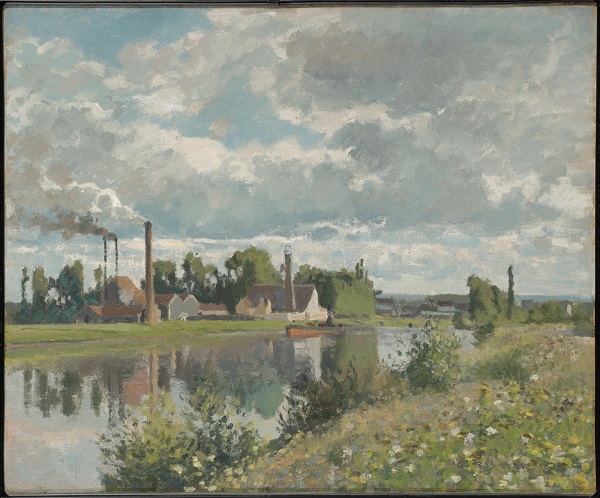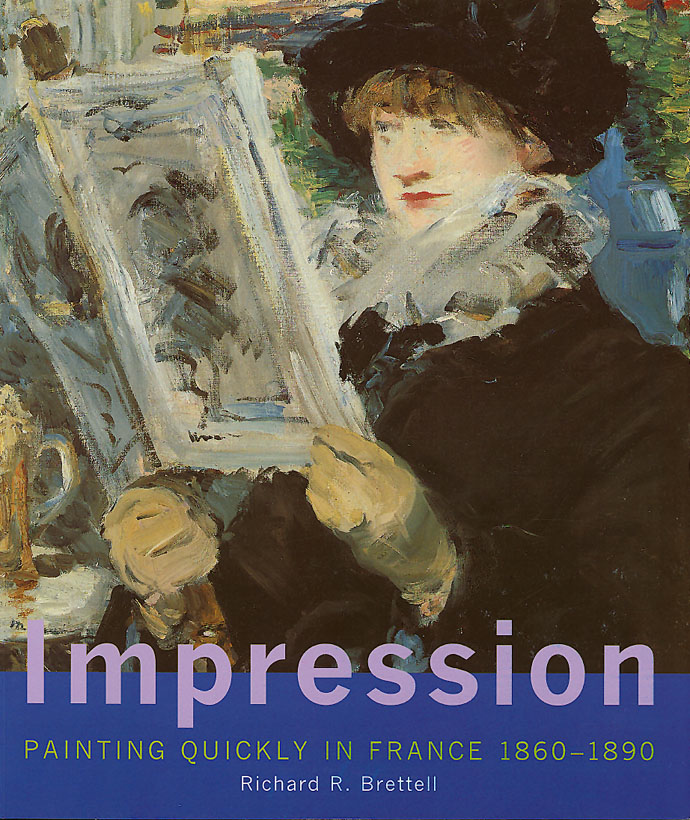
june 17–september 9, 2001
ABOUT THE EXHIBITION
Impression: Painting Quickly in France, 1860-1890 explores those aspects of Impressionist painting -- spontaneity and improvisation -- that so challenged many of its early viewers. It brings together paintings by the leading artists of the movement -- Manet, Monet, Renoir, Morisot, and Sisley -- that were made rapidly in one or only a few working sessions. Though these paintings were thought to resemble oil sketches, traditionally conceived as mere preparations for more elaborately executed works, they were in fact complete artistic statements, paintings that were signed, often dated, and, audaciously enough, sent for sale or exhibition as "finished" works of art. This is the first exhibition to group together this particular category of Impressionist painting and to study it in depth. It includes many of the most beautiful and evocative "Impressions" painted in France over three decades of the late nineteenth century, and it returns attention to what was most vital, and to some most threatening, about Impressionism at its origins. It also explores the immediate antecedents of rapid painting and its evolution in artists as diverse as Degas and Van Gogh. By reexamining these works in their technical as well as thematic dimensions, the exhibition hopes to recapture an essential characteristic of Impressionist painting -- the seductive charm of speed.
Painting Slowly, Painting Quickly
Many, if not most, Impressionist paintings were in fact painted slowly and deliberately. Pictures were often completed in the studio rather than in the open air as commonly thought. A comparison of two paintings by Camille Pissarro underscores the difference between slowly and quickly painted Impressionist pictures. Roughly the same size and similar in date, The River Oise near Pontoise and After the Rain, Quay at Pontoise depict the buildings and smokestacks of a small industrial town northwest of Paris. The earlier picture is the more finished in appearance, with carefully plotted and layered brushstrokes that reveal the methodical technique typical of this artist. After the Rain, by contrast, is broadly executed with cursive strokes of paint and a summary character that suggests it was painted in a single session. Except for the signature and date, it might not be considered a completed work of art at all. This painting takes its place with a handful of spontaneously painted pictures that intersperse Pissarro's career, including Study of a Sunset, Pontoise. Such works convey a love of the paint medium and subject that adds to our understanding of both Pissarro and the Impression.
Impression: Painting Quickly in France, 1860-1890 is organized by the Sterling and Francine Clark Art Institute in association with the National Gallery, London, and the Van Gogh Museum, Amsterdam. The Clark Art Institute will be the only North American venue for this exhibition, which will be on view from June 17 through September 9, 2001.
This text is adapted from the catalogue by Richard Brettell that accompanies the exhibition.

Camille Pissarro
French, 1830-1903
The River Oise near Pointoise
1873
Oil on canvas
17 13/16 x 21 5/8 inches
Sterling and Francine Clark Art Institute

The "point" of Impressionist art was to capture the fleeting moment, the transient effect of a certain place, person, or time. Impressionist artists worked on-site with speed and directness, hoping to distinguish their works with a new freshness, immediacy, and truthfulness. Yet the paintings they exhibited were in fact almost always completed in the studio later. This beautifully illustrated book investigates for the first time the works that might truly be called "Impressions"—paintings that appear to be rapid transcriptions of shifting subjects but were nonetheless considered finished by their makers. Renowned Impressionist scholar Richard R. Brettell identifies and discusses Impressions by some of the best-known artists of the period, including Manet, Monet, Renoir, Sisley, Morisot, Degas, Pissarro, and Caillebotte.
The book surveys the various practices of individual artists in the making, signing, exhibiting, and selling of Impressions. Brettell discusses the pictorial theories behind the paintings, the sales strategies for them, and the various forms they took, including works completed in one sitting, "apparent" Impressions, and repeated Impressions. In a concluding chapter, the author considers a small group of works by Vincent van Gogh, who painted with an almost fanatical rapidity and was the only major Post-Impressionist painter to push the aesthetic of the Impression even further.
This book is the catalogue for an exhibition at the National Gallery in London from November 1, 2000, to January 28, 2001, the Van Gogh Museum in Amsterdam from March 2 to May 20, 2001, and the Clark Art Institute from June 17 to September 9, 2001.
240 pages, 9 3/8 x 11 inches
183 color and six black-and-white illustrations
2000
Published in association with Yale University Press
ISBN 0-300-08446-3 (hardcover)
ISBN 0-300-08447-1 (softcover)
